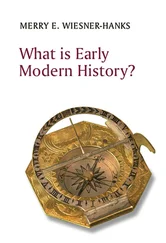R. Nisbet Bain - The Cambridge Modern History
Здесь есть возможность читать онлайн «R. Nisbet Bain - The Cambridge Modern History» — ознакомительный отрывок электронной книги совершенно бесплатно, а после прочтения отрывка купить полную версию. В некоторых случаях можно слушать аудио, скачать через торрент в формате fb2 и присутствует краткое содержание. Жанр: unrecognised, на английском языке. Описание произведения, (предисловие) а так же отзывы посетителей доступны на портале библиотеки ЛибКат.
- Название:The Cambridge Modern History
- Автор:
- Жанр:
- Год:неизвестен
- ISBN:нет данных
- Рейтинг книги:4 / 5. Голосов: 1
-
Избранное:Добавить в избранное
- Отзывы:
-
Ваша оценка:
- 80
- 1
- 2
- 3
- 4
- 5
The Cambridge Modern History: краткое содержание, описание и аннотация
Предлагаем к чтению аннотацию, описание, краткое содержание или предисловие (зависит от того, что написал сам автор книги «The Cambridge Modern History»). Если вы не нашли необходимую информацию о книге — напишите в комментариях, мы постараемся отыскать её.
The first series was planned by Lord Acton and edited by him with Stanley Leathes, Adolphus Ward and George Prothero.
The Cambridge Modern History Collection features all five original volumes:
Volume I: The Renaissance
Volume II: The Reformation, the End of the Middle Ages
Volume III The Wars of Religion
Volume IV: The 30 Years' War
Volume V: The Age of Louis XIV
The Cambridge Modern History — читать онлайн ознакомительный отрывок
Ниже представлен текст книги, разбитый по страницам. Система сохранения места последней прочитанной страницы, позволяет с удобством читать онлайн бесплатно книгу «The Cambridge Modern History», без необходимости каждый раз заново искать на чём Вы остановились. Поставьте закладку, и сможете в любой момент перейти на страницу, на которой закончили чтение.
Интервал:
Закладка:
A not unnatural reaction against the new puritanism showed itself, whenever Savonarola temporarily withdrew or lost his influence. Then the gambling-hells, the taverns, the brothels drove a roaring trade; and Savonarola’s death was followed by scenes of profanity such as Florence had never before witnessed. It was a necessary result of the fusion of ethics and politics that the reformer regarded opposition to his political views as involving sin. Thus the dividing line in politics produced cleavage in morals and religion, and vice versa. Serious political opponents became confused with men of pleasure, and, indeed, scents and silks and sin were too apt to be the outward signs of the party loyalty of the Arrabbiati. Florence on a small scale prefigured our own Commonwealth and its results.
Although Savonarola seemed for a time all-powerful, yet from the first there were elements of opposition. Florence had been saved from bloodshed but not from discord; as the chemist Landucci put it, “some would have it roast and others liked it boiled”; there were those who muttered, “this dirty friar is bringing us to grief.” Parties began to shape themselves. It was scarcely a conflict of class against class, though as yet Savonarola could usually rely upon the middle, and, perhaps, upon the lower classes. Most of the aristocrats who had been instrumental in Piero’s expulsion were opposed to the Friar who had robbed them of their reward. Less moderate than their leader Piero Capponi were the Nerli, the Pazzi, the younger line of Medici, and the clever lawyer Vespucci, the more pronounced of whom were nicknamed Arrabbiati. But Francesco Valori, a leading member of the Twenty, after some hesitation became the recognised head of the Savonarolists, who were christened Piagnoni (snivellers) or Colletorti (wry-necks). They could boast of other members of good family, who before or afterwards played leading parts. Such were Paol’ Antonio Soderini, Giovanni Battista Ridolfi, Luca Albizzi, Alamanno and Jacopo Salviati, and Piero Guicci-ardini, the historian’s father. The remnants of the Medicean party lay low, thankful to have escaped with a sound skin, or attached themselves to the other groups. The Savonarolist party, writes Parenti, included many Mediceans who had owed their lives to him; and it was a common accusation against the Friar that he was a secret adherent of the Medici.
Family solidarity was the most permanent feature of Florentine life, yet so intense was the excitement that families were riven asunder, father standing against son and brother against brother; the Ridolfi, the Salviati, the Soderini were divided. It was said, indeed, that Paol’ Antonio Soderini made the family fortunes safe by inducing his son to join the Compagnacci, a dining club of young bloods and swashbucklers irreconcilable to reform. The line of demarcation was as much ethical as political. Guicciardini has admirably analysed the parties: behind Capponi were ranged aristocrats who hated popular government, sceptics who disbelieved in prophecy, libertines who feared molestation in their pleasures, devotees of the Franciscans and other Orders. Against these Valori led an equally heterogeneous force; serious men who believed in Savonarola’s prophecies or welcomed his good works, hypocrites who drew a mantle of sanctity round secret sin, worldlings whose avenue to popularity and office lay through the stronger party. The outward test was foreign policy. Here the line was hard and fast. The Plagnoni steadfastly looked to France for terrestrial salvation. The Arrabbiati, in the phrase of the Spanish Pope and the Austrian Maximilian, would be “good Italians’“; they would join the Italian League and close the Peninsula to the foreigner; they courted the Pope and the Duke of Milan, whose ambassador Somenzi became the receptacle or the source of all the scandal and intrigue against the Friar. It was certain that sooner or later foreign politics would help to decide the issue. All depended on the realisation of prophecies as to the recovery of Pisa. Florence could not permanently remain in isolation. Prophecy, unfortified by French aid, would prove a stimulant with inevitable reaction.
If Savonarola, in Machiavelli’s words, was an unarmed prophet, the chosen city was a weak military State. The rebellion of Pisa tasked her whole strength for many years to come. When Charles VIII retired from Naples, Savonarola met him on the Florentine frontier at Poggibonsi (June, 1495),—and this on no public mission, but as one directly inspired by God. The King was threatened with the condign punishment of heaven if he did not behave honestly towards Florence. The prophecy seemed to receive fulfilment in the death of the King’s children, but this was slight consolation to the injured town. Charles, indeed, avoided Florence, but he demanded the third instalment of his subsidy, and dismissed the prophet with vague promises. Indignation was already expressed against the folly of clinging to France at the instigation of a “foreign Friar.” “Believe now in your Friar,” men cried, “who declared that he held Pisa in his fist!” No sooner had Charles left Italy, than the French commandants, corrupt and insubordinate, sold the fortress of Pisa to its inhabitants, and Lorenzo de1 Medici’s conquests, Sarzana and Pietra Santa, to the Genoese and Lucchese respectively. Beaumont, governor of Leghorn, alone restored his charge. Thus Florence had lost her seaboard from the mouth of the Magra to the Pisan marshes, while the natural road northwards was blocked by unfriendly States. Nor was this all; in the far south Montepulciano revolted to Siena, whilst beyond the Apennines the protectorate of Faenza was abandoned and control lost of the well-worn route to the Adriatic by the Val di Lamone. On the tableland of the Mugello, in the mountain basin of the Casentino, in the subject city of Arezzo and all down the Chiana valley, Florence had to fear a revival of local autonomy or lingering attachment to the Medici. From furthest North to extremest South, from the Pisan littoral to the backbone of the Apennines, the State was threatened with disintegration. The League, which in March, 1495, had been formed against the French, took Pisa under its protectorate; Ludovico il Moro, indeed, soon withdrew his troops; he had no wish to exasperate the Florentines. His aim was the erection of an oligarchy which would re-connect the chain of Florentine-Milanese alliance, snapped by Piero. But Venice had come to stay. By her settlements in Romagna and Apulia she was making the Adriatic a mare clausum; Pisa should be a stepping-stone to the monopoly of the Tuscan Gulf.
The Pisan volunteers were now stiffened by the seasoned mercenaries of Venice, whose trained engineers strengthened the defences which her artillery could arm. Her incomparable Stradiot light-horse, swimming rivers and treating mountain watercourses as highroads, pushed far into Florentine territory, raided down the line of the modern railway towards Volterra, wasted the rich corn-lands of the Elsa, threaded the intricate hill country towards the Nievole, endangering Florentine communications with Pistoia. In 1509 their ubiquity was to be the bugbear of the finest French and Imperial troops; it is small wonder that they caused embarrassment to the inexperienced Florentines. Pisa controlled a large territory; she was protected to west and south by stagnant side-channels of the Arno and miasmatic marshes; to east and north-east lay a mass of tumbling hills. The Pisan peasantry fought desperately, and every hill-village became a fortress. Pisa could not be starved, for the sea was open to Genoese and Corsican cornfactors; Lucca afforded a ready market for the sale of Pisan property; through Lucchese and Pisan hills wound convoys, whose local knowledge enabled them to baffle the vigilance, or utilise the somnolence, of the Florentine condottieri.
Читать дальшеИнтервал:
Закладка:
Похожие книги на «The Cambridge Modern History»
Представляем Вашему вниманию похожие книги на «The Cambridge Modern History» списком для выбора. Мы отобрали схожую по названию и смыслу литературу в надежде предоставить читателям больше вариантов отыскать новые, интересные, ещё непрочитанные произведения.
Обсуждение, отзывы о книге «The Cambridge Modern History» и просто собственные мнения читателей. Оставьте ваши комментарии, напишите, что Вы думаете о произведении, его смысле или главных героях. Укажите что конкретно понравилось, а что нет, и почему Вы так считаете.












